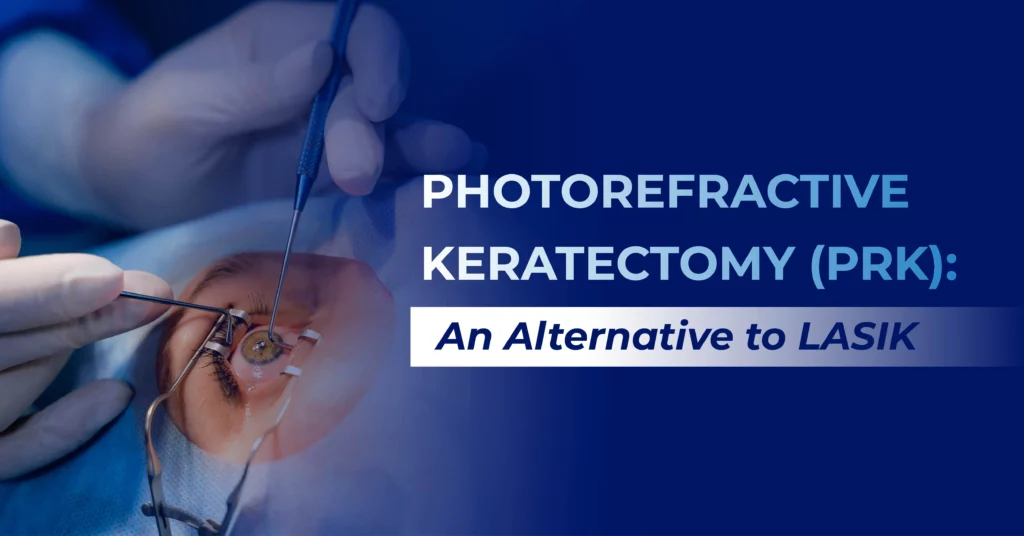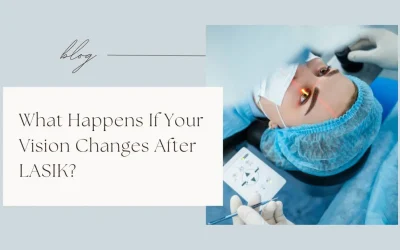Photorefractive Keratectomy (PRK): An Alternative to LASIK

Photorefractive Keratectomy (PRK) is a popular refractive surgery procedure that offers an effective alternative to LASIK for correcting vision problems. As part of this article discussion, we will explore the critical aspects of PRK, its advantages over LASIK, the procedure itself, the recovery process, and important considerations for those considering PRK surgery.
Introduction to Photorefractive Keratectomy (PRK)
PRK is a surgical procedure that utilises an excimer laser to reshape the cornea and rectify refractive defects such as nearsightedness (myopia), farsightedness (hyperopia), and astigmatism. Unlike LASIK, which involves creating a corneal flap, PRK consists in removing the thin outer layer of the cornea called the epithelium.
Understanding the Differences Between PRK and LASIK
The PRK Procedure
During the PRK procedure, the surgeon gently removes the epithelium using a specialised brush or alcohol solution. Once the epithelium is removed, the excimer laser is used to precisely reshape the cornea based on the individual’s unique prescription. A protective contact lens is then placed over the treated area to aid in the healing process.
The LASIK Procedure
On the other hand, LASIK involves creating a flap in the cornea using a microkeratome or femtosecond laser. This flap is lifted, and the underlying cornea is reshaped using the excimer laser. The flap is then repositioned as a natural bandage for the treated area.
Advantages of PRK over LASIK
Safety Considerations

PRK eliminates the risk of flap-related complications that can occur in LASIK surgery. PRK offers a safer alternative without a corneal flap, especially for individuals engaged in contact sports or occupations with a higher risk of eye injury.
Treatment Eligibility
PRK is suitable for a broader range of patients compared to LASIK. It is a viable option for individuals with thin corneas, irregular corneal shapes, or other factors that may make them undeserving for LASIK surgery.
Corneal Thickness Requirements
PRK requires less corneal tissue removal than LASIK, making it a preferred choice for individuals with thinner corneas. This factor becomes particularly important when considering long-term corneal stability and reducing the risk of complications.
Disadvantages of PRK Compared to LASIK
Longer Recovery Time

One of the primary drawbacks of PRK is its more extended recovery period compared to LASIK. Since the cornea’s outer layer needs time to regenerate after epithelial removal, visual recovery can take several days to a few weeks. However, it is quintessential to note that the ultimate visual outcomes of PRK are comparable to LASIK in the long run.
Potential Discomfort During Healing
During the initial healing phase of PRK, some patients may experience mild discomforts, such as eye irritation, sensitivity to light, or a foreign body sensation. Prescribed lubricating eye drops and pain medications can help alleviate these symptoms.
Visual Recovery Process
While most patients notice significant visual improvement within the first few weeks after PRK, vision may take several months to stabilise completely. The gradual nature of visual recovery should be considered, and realistic expectations should be set during the preoperative consultation.
Who Should Consider PRK?
Patients with Thin Corneas

If you have been advised that your corneas are too thin for LASIK, PRK may be a suitable alternative. PRK removes less corneal tissue, making it an ideal choice for individuals with thinner corneas.
Individuals with Higher Risk Factors
Patients engaged in activities with a higher risk of eye injury, such as contact sports or professions involving significant eye contact, may benefit from PRK’s flapless approach and reduced risk of flap-related complications.
Those Seeking Visual Freedom without Flap Creation
Some patients prefer not to have a corneal flap created during their surgery. PRK offers a viable option for those who prioritise avoiding flap-related issues and potential long-term complications associated with creating and healing a corneal flap.
PRK Procedure Step-by-Step
The PRK procedure involves several key steps:
- Preoperative Evaluation and Consultation: The surgeon will perform a comprehensive eye examination to determine your candidacy for PRK surgery and discuss your expectations and potential risks.
- Anaesthetic Eye Drops: Before the procedure begins, numbing eye drops are applied to ensure your comfort throughout the surgery.
- Epithelial Removal: The surgeon gently removes the thin outer layer of the cornea, known as the epithelium, using a specialised brush or alcohol solution.
- Excimer Laser Reshaping: The excimer laser is then used to precisely reshape the cornea by removing tiny amounts of tissue based on your unique prescription.
- Protective Contact Lens Placement: Following the laser treatment, a therapeutic contact lens is placed over the treated area to protect it during the initial healing phase.
- Postoperative Care Instructions: Your surgeon will provide detailed instructions on how to care for your eyes, including the use of
PRK Recovery and Results
Initial Healing Phase
The epithelium regenerates and covers the treated area during the initial healing phase. This process typically takes a few days, during which you may experience discomfort, light sensitivity, and blurred vision. Following your surgeon’s instructions for using prescribed eye drops and managing pain is essential.
Visual Improvement Timeline
After the initial healing phase, you will gradually notice improvements in your vision. However, your eye may take several weeks or months to stabilise completely. Your surgeon will monitor your progress through follow-up appointments and guide you throughout recovery.
Long-term Stability
PRK provides long-term vision correction, and the results are generally stable. Once your vision has stabilised, you can enjoy clear and improved eyesight without needing glasses or contact lenses. Regular eye exams are still recommended to ensure the ongoing health of your eyes.
Risks and Complications Associated with PRK
As with any surgical procedure, PRK carries certain risks and potential complications. It is essential to be aware of these before making a decision. Some possible hazards include:
- Infection: Although rare, there is a small risk of developing an eye infection after PRK. Following your surgeon’s postoperative care instructions and using prescribed medications can help minimise this risk.
- Haze Formation: A temporary haze can sometimes develop on the cornea during the healing. This haze may affect visual clarity but resolves with time and appropriate management.
- Undercorrection or Overcorrection: While PRK aims to achieve optimal vision correction, slight under-correction or overcorrection is possible. Enhancements can be performed if necessary to fine-tune the results.
Discussing these potential risks and complications with your surgeon to make an informed decision about undergoing PRK is essential.
Conclusion

Photorefractive Keratectomy (PRK) offers a safe and effective alternative to LASIK for vision correction. Its flapless approach makes PRK suitable for patients with thin corneas or higher risk factors. Although the recovery time may be longer than LASIK, PRK provides excellent long-term results and visual stability. By choosing a qualified surgeon, understanding the procedure, and following postoperative care instructions, you can make an informed decision about PRK surgery and achieve improved vision without needing glasses or contact lenses.
It’s better to get tested and know the status of your condition from one of the most reputed eye care hospitals in Hyderabad. At Global Eye Hospital, we are well-equipped and experienced in offering all treatment options for refractive errors.
Book your appointment now for all eye-related services.
Your Vision Our Focus


